Bing Translator vs Google Translate
July 29, 2023 | Author: Adam Levine
4
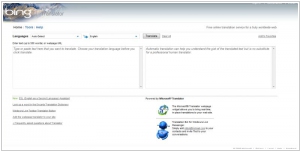
Bing Translator is a user facing translation portal provided by Microsoft as part of its Bing services to translate texts or entire web pages into different languages. All translation pairs are powered by the Microsoft Translator statistical machine translation platform and web service, developed by Microsoft Research, as its backend translation software.
20
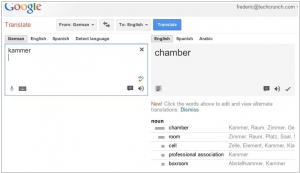
Google Translate is a free translation service that provides instant translations between dozens of different languages. It can translate words, sentences and web pages between any combination of our supported languages. With Google Translate, we hope to make information universally accessible and useful, regardless of the language in which it’s written.
See also:
Top 10 Online Translators
Top 10 Online Translators
Bing Translator and Google Translate are both widely used online language translation tools that provide quick and convenient translation services. Bing Translator, developed by Microsoft, offers translation capabilities for text, websites, and documents. It provides support for a variety of languages and offers additional features like voice translation and image translation. On the other hand, Google Translate, developed by Google, is a comprehensive translation tool that covers a vast number of languages and provides translation services for text, speech, images, and even real-time conversations. It offers a user-friendly interface, supports offline translation in certain languages, and integrates with other Google services. Both tools have their strengths, with Bing Translator offering additional features like image translation, while Google Translate provides a broader range of translation options and extensive language support.
See also: Top 10 Online Translators
See also: Top 10 Online Translators
Bing Translator vs Google Translate in our news:
2016. Google Translate gets in-app translations on Android, offline mode on iOS
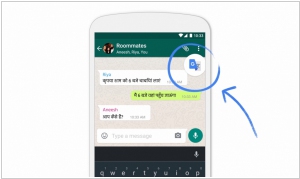
Google has introduced an update to its Translate applications for both iOS and Android devices. This latest version brings offline support to the iOS platform, a feature that has already been available on Android. Offline support proves to be particularly useful when traveling, as it eliminates concerns about a reliable internet connection. The Google team has focused on optimizing language package downloads, reducing their size by up to 90 percent. These packages now weigh approximately 25 MB and are accessible in 52 different languages. For Android users, the key addition is the Tap to Translate feature. Instead of the traditional method of copying and pasting text from apps into Translate, users can now simply copy the text, and the translation option will automatically appear. The translated content is displayed as an overlay without the need to switch between various applications.
2015. Google Translate app adds 20 more languages
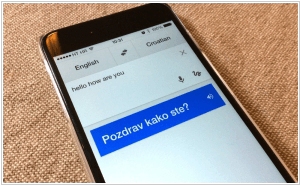
Google is expanding the capabilities of its Translate app to encompass more than twenty-five additional languages. Users will now have the ability to translate to and from English with languages such as Bulgarian, Catalan, Croatian, Czech, Danish, Dutch, Filipino, Finnish, Hungarian, Indonesian, Lithuanian, Norwegian, Polish, Romanian, Slovak, Swedish, Turkish, and Ukrainian. While Google already provides a translation feature through its website search results and directly within its Chrome browser, the demand for portable, on-the-go translation is evident. The Google Translate app offers three methods for translating text: typing the desired text, speaking the text, or using the mobile device's camera to capture and automatically translate text from signs, books, or other objects. Importantly, the visual translation feature can be used offline, eliminating the need for an internet connection.
2015. Google Translate now does real-time voice and written text translation
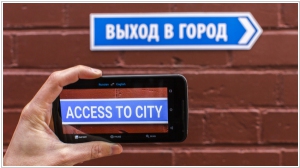
The mobile app for Google Translate on Android and iOS has received an impressive update, enhancing its capabilities even further. The latest update introduces two remarkable features: real-time voice translation and sign translation. While the app has previously offered image-based translation, these new features provide instant translation with zero delay, and the best part is that they work offline, making it incredibly useful for frequent travelers. To translate a sign, you simply need to point your camera at it, ensuring it is captured completely, and the app will promptly provide the translation. The real-time voice translation feature is equally impressive, acting as an intermediary for conversations between individuals speaking different languages. By tapping the in-app microphone once and initiating the conversation in the foreign language, the app recognizes the language and allows both parties to communicate. As the conversation progresses, the app continuously generates text-based translations in real-time, effectively breaking down language barriers.
2014. Video: real-time voice translator in Skype
Microsoft's Bing Translator, an online translation service, has always been overshadowed by Google Translate. All the advancements, such as full text translation, mobile support, voice recognition, and translation playback, initially debuted in Google Translate before being replicated in Bing Translator. However, Microsoft has now taken the lead. During the CodeConf conference, Satya Nadella showcased a voice translator in Skype that can recognize phrases in one language and play them back in another (almost) instantly. This breakthrough enables individuals from different countries to communicate in their native languages. Currently, the feature only supports English and German, but Satya mentioned that a working version with additional languages will be available in Skype before the end of this year.
2009. Google Translate now translates in real time
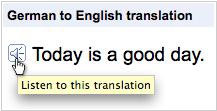
In the near future, the advancement of text and speech translation technology will become increasingly crucial for the virtual economy. Language acts as a significant barrier that hinders collaboration among talented individuals from different countries on shared projects. Therefore, we hold high hopes for Google Translate as an innovative service that breaks down this barrier. Today, Google has released a new version of the service, introducing several useful features. Firstly, the service now provides real-time translation results as you type. Secondly, when translating from any language into English, you can listen to the translated text, allowing for the practice of pronunciation. Furthermore, a Romanization feature has been added. For instance, when translating into Chinese, the translation can be read in Roman letters. Another noteworthy feature is the automatic language detection for the original text. Additionally, when you need to translate a web page, you can simply enter its URL into the text entry field.




